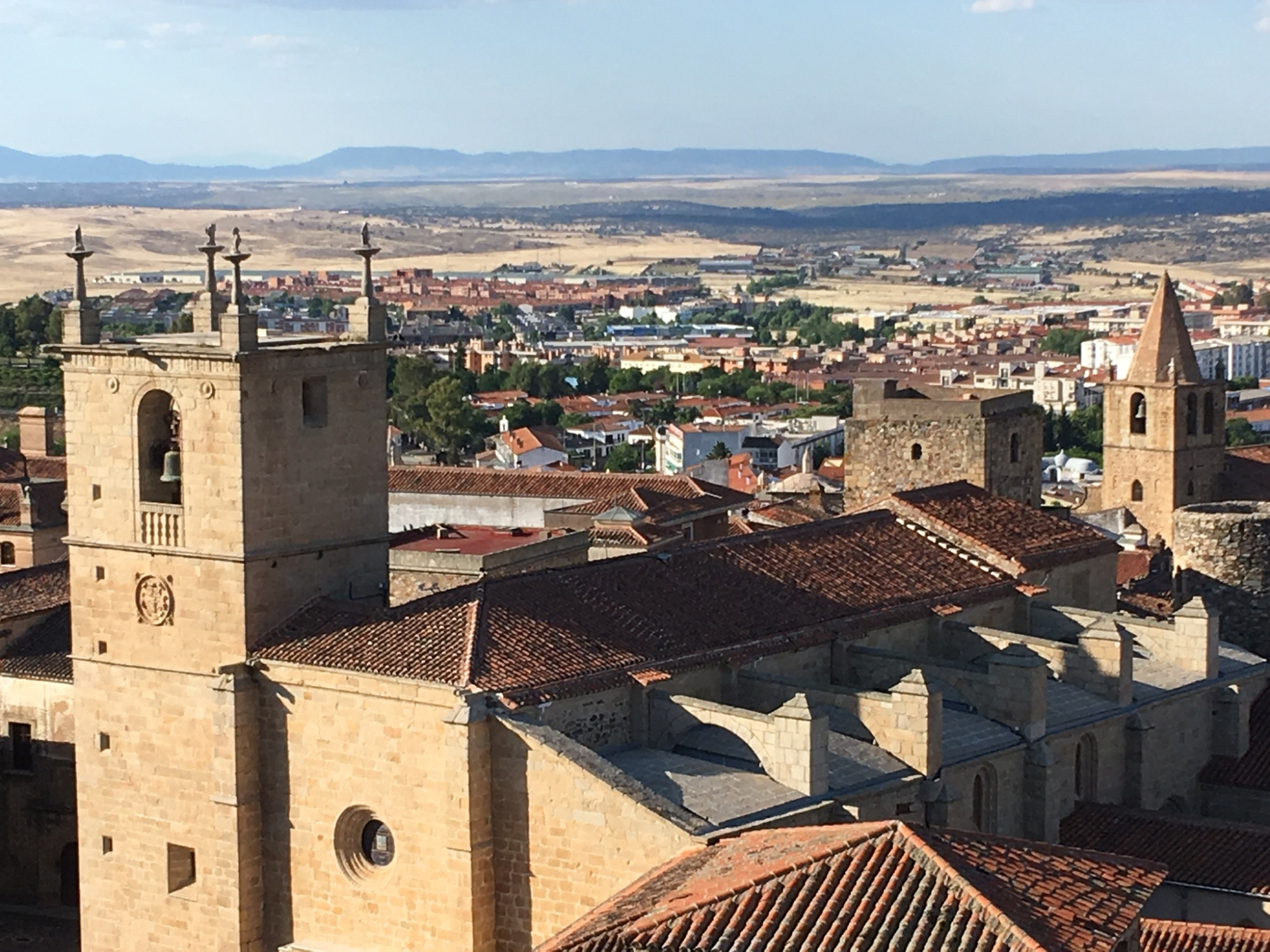Our train from Merida to Caceres took us through the unique region of Extremadura. It is unique in the sense that it is farmed and grazed to benefit the land, rather than to make huge amounts of money. The land is divided into roughly 600 hectare-size privately owned landholdings (dehesas). They consist primarily of varying densities of Holm and Cork oak trees with a smattering of others, covering tens of thousands of hectares planted in a way that allows space for grazing and crops.
Based on a 4-7 year cycle, land use is a combination of crop growth, pasture and forestry rotated to allow for retainment of soil nutrients as the cycles give time for the soil to recover and renew.
Grasses and wildflowers quickly return to give a more natural look and provide a livelihood for bees, butterflies and other insects, with natural fertilisers from grazing stock enabled by the provision of scattered shade. The fallen leaves add fibre and fertility to the poor soils, the tree roots prevent erosion, the pruned branches produce charcoal and are used for cooking, while income also consists of honey from the bees, wool, leather, meat, cheese, ham from wild boars and cork from the oaks.
These natural farming techniques and different tree densities also allow for a range of bird varieties. They provide an oasis for the rare Iberian lynx, the Spanish imperial eagle that we saw on the train, the black vulture which we were lucky to see in Portugal, and the black stork, all requiring large homes. While blackbirds are attracted to the denser parts, the lark comes to the open crop fields, the warblers arrive when the shrubs grow back, the owls like the taller trees, and in winter, thousands of birds come from Scandinavia to feed off the crops.
This land is not rich, but the way it is managed above allows for the land to be productive by nurturing it in a way that suits its quality. Today we might refer to it as poor quality needing lots of fertiliser and water, but all land is different like us and has varying health requirements. If it is treated in a way that meets its needs then it will flourish, unheralded, and in its own way.
As I looked out the train window I saw no lush fields, no myriad of irrigation channels, no rivers or lakes, but there was a mystery there such that I had to keep looking. The trees weren’t planted in rows, there were no fancy homesteads, no sheds full of machinery. There was instead what seemed to be a very natural landscape and that’s true, but it was also extremely well thought out and planned at the same time. Now the task is about keeping this process going for the long term, nurturing it and adapting to its needs, which will also be ours.

